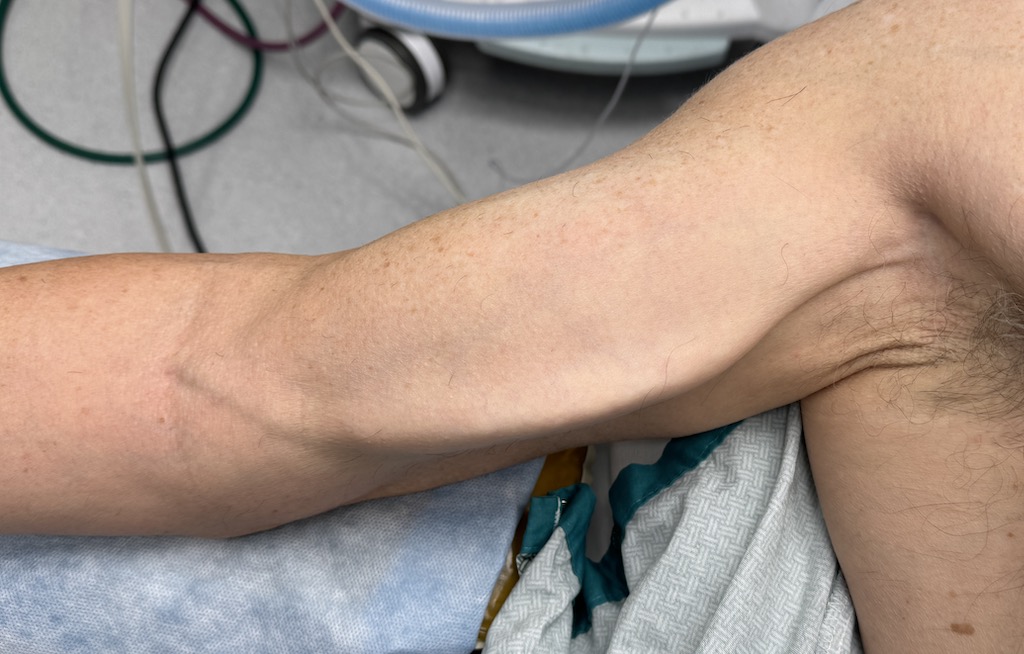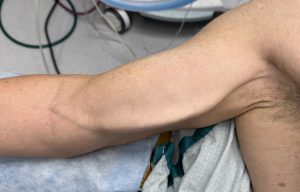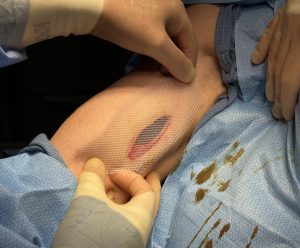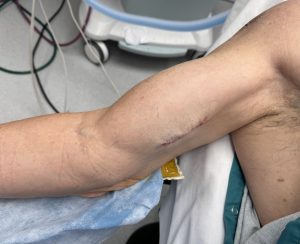Background: Augmentation of the bicep muscle is most successfully done with an implant. Such bicep implants can be placed in three different pocket locations, subfascial (on top of the muscle), submuscular (under the muscle) and partial submuscular. (inside the muscle) Each pocket location has its advantages and disadvantages but the main advantage of the deeper tissue pockets is the lower risk of implant show and implant malposition. These risks are much higher in the subfascial pocket location where the tissue thicknesses are less.
While these risks are lower when the implant is covered by some muscle this does not mean they are impossible from occurring. Bicep implant malpositioning can occur in numerous manifestation from insufficient pocket development inferiorly to medial or lateral displacements. It is the medial/lateral displacements that are the hardest to correct as the incision is usually remote (axillary approach) with really no method to manipulate the pocket directly. (like what can be done in breast implants)
The direct approach to bicep implant positioning is through a medial arm incision. This allows for the implant to be directly moves and its position changed as well as capsular manipulations done. Tightening down the pocket by suture plication is the traditional approach which has a high rate of success. Traditionally this only leaves the nuclear option of implant removal to allow the pocket to scar down and reimplant later. An alternative option is reinforce the larger implant pocket side with mesh. A concept that is well known in repositioning of breast implants in which the pocket is either too now or too far to the side.
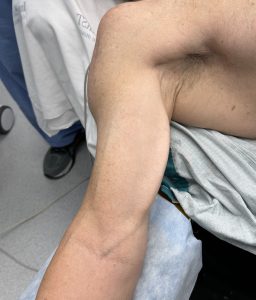
A prior right bicep implant repositioning was done through a limited medial arm incision with capsular plications. While effective he developed median nerve compression symptoms involving the flexor carpi radialis which necessitated the release of the capsular plications. With regular wrapping he maintained a good implant position until sic months later it spontaneously flipped again.
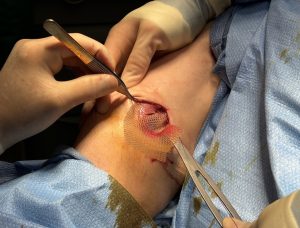
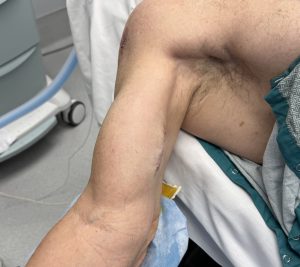
Key Points:
1) Bicep implant malpositoning can be associated with implant flipping and an expanded pocket.
2) Bicep implant repositioning and pocket tightening can be accomplished by a medial rim incisional approach.
3) When capsular plication fails to prevent long term bicep implant malpositionng a mesh reinforcement approach can be used.
Dr. Barry Eppley
World-Renowned Plastic Surgeon

